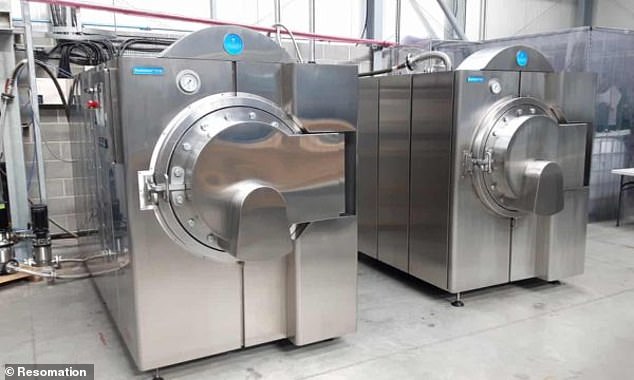
Eco-Friendly Water Cremation Funerals Dissolving Bodies Arrive in Britain Following Global Adoption
UK Considers ‘Boil-in-a-Bag’ Funerals: A Controversial Alternative to Burial and Cremation
[Image: A steel vessel used for water cremation, showing a technician in a lab setting.]
Caption: Water cremation involves decomposing bodies in a mixture of water, heat, and alkaline chemicals.
The UK may soon approve water cremation—colloquially called “boil-in-a-bag” funerals—as an eco-friendly alternative to traditional burials and flame cremations. Currently unregulated, the method could gain legal status following a consultation by the Law Commission.
What Is Water Cremation?
Water cremation (alkaline hydrolysis) uses a pressurized steel vessel to rapidly break down a body in water and potassium hydroxide at 152°C (305°F). Over 4–6 hours, tissues dissolve, leaving sterile liquid (“effluent”) and bone fragments. The neutral effluent, containing sugars and salts, is safely drained, while bones are processed into ash for families.
[Image: Close-up of bone fragments post-process, resembling traditional cremation ashes.]
Caption: Remaining bones are dried, pulverized, and given to families in urns.
Advocates highlight its environmental benefits, but critics argue it lacks dignity. The Catholic Church and some cultures oppose it, citing body desecration concerns.
Environmental Edge
Traditional cremation emits 535 lbs of CO₂ per body (equivalent to a 600-mile car trip). Burials risk soil pollution from non-biodegradable materials. Water cremation uses 90% less energy than flame-based methods and leaves no air pollution.
[Image: Side-by-side of a flame crematorium and a water cremation facility.]
Caption: Water cremation avoids CO₂ emissions and reduces energy use.
Controversy & Perception
The process is legal in 30 U.S. states, Canada, and South Africa. Ireland opened Europe’s first facility in 2023. However, UK regulators previously blocked trials due to public discomfort. Dr. Lian Lundy, a wastewater expert, notes resistance stems from associating the effluent with sewage, though hospitals safely dispose of similar waste.
[Image: Staff operating a water cremation machine in Minnesota.]
Caption: U.S. facilities charge $1,500–$5,000, with costs expected to mirror UK cremations.
UK Approval Timeline
Co-op Funeralcare, handling 93,000 annual services, hopes to introduce water cremation by 2030 pending regulatory changes. A spokesperson stated, “We encourage exploration into alternatives offering greater choice and environmental benefits.”
Cost & Alternatives
Prices may align with traditional cremations (£1,000–£3,000). Elsewhere, options like promession (freeze-drying bodies into powder) and human composting (soil conversion) exist, but UK laws lag behind.
[Image: Memorial plaque in a natural burial ground.]
Caption: Current UK options include burial, cremation, and sea scatterings.
While water cremation isn’t yet available, its potential legalization reflects a shift toward sustainable end-of-life choices—balinnovation with tradition.
Key Steps in Water Cremation:
- Body placed in a vessel with alkaline solution.
- Heated to 152°C for 4–6 hours.
- Effluent drained; bones processed into ash.
[Image: Infographic comparing burial, flame, and water cremation emissions.]
Caption: Water cremation offers a lower carbon footprint than traditional methods.
The UK’s decision could redefine funeral practices, merging environmental priorities with evolving societal acceptance.


